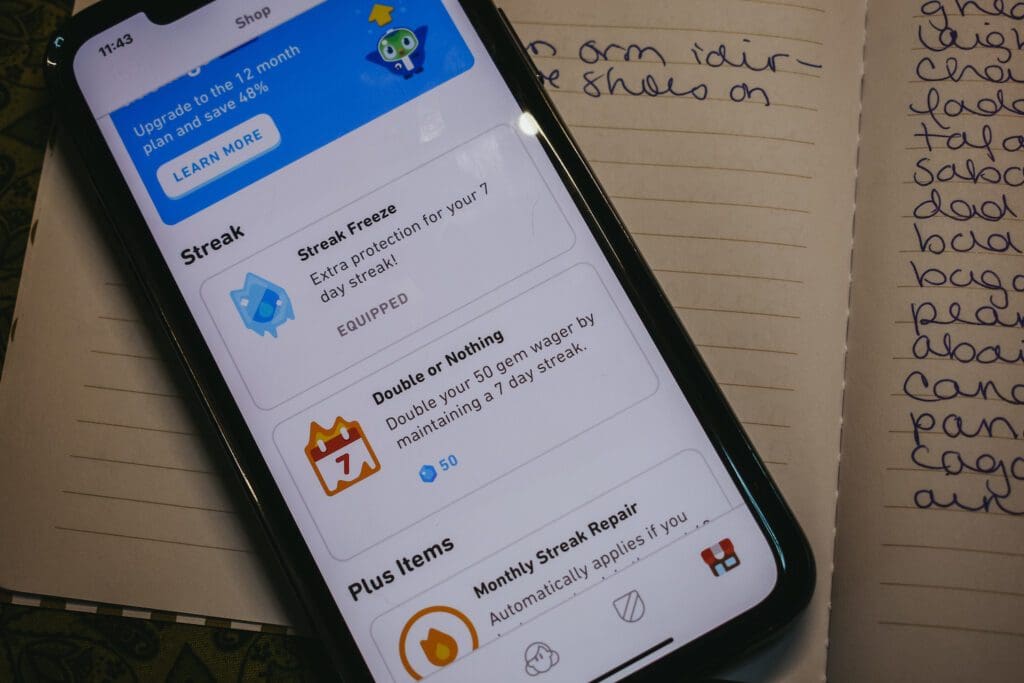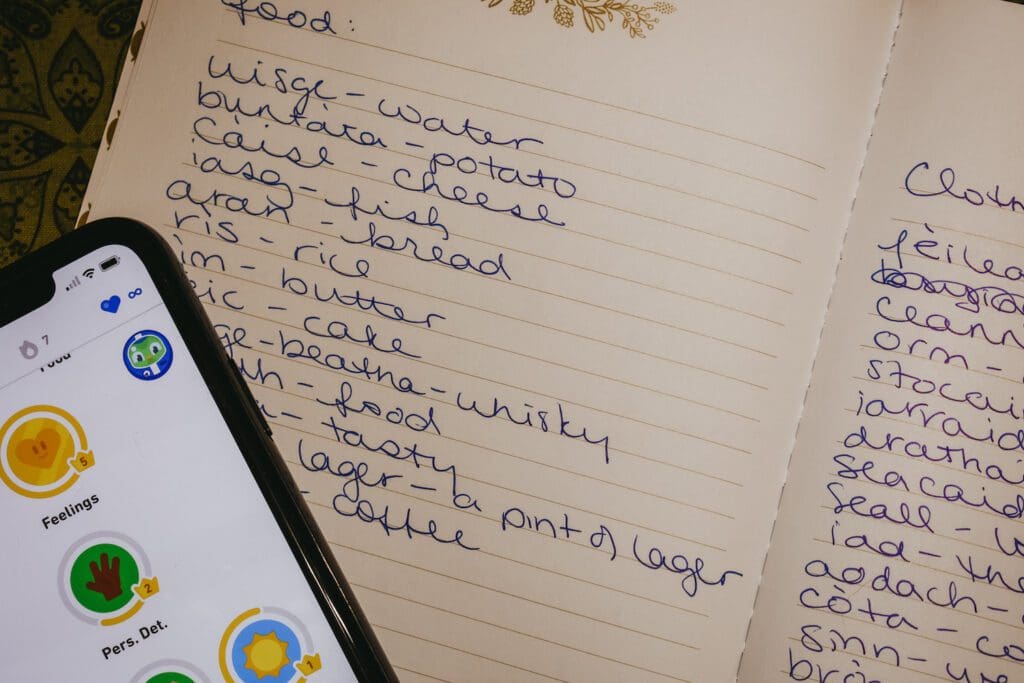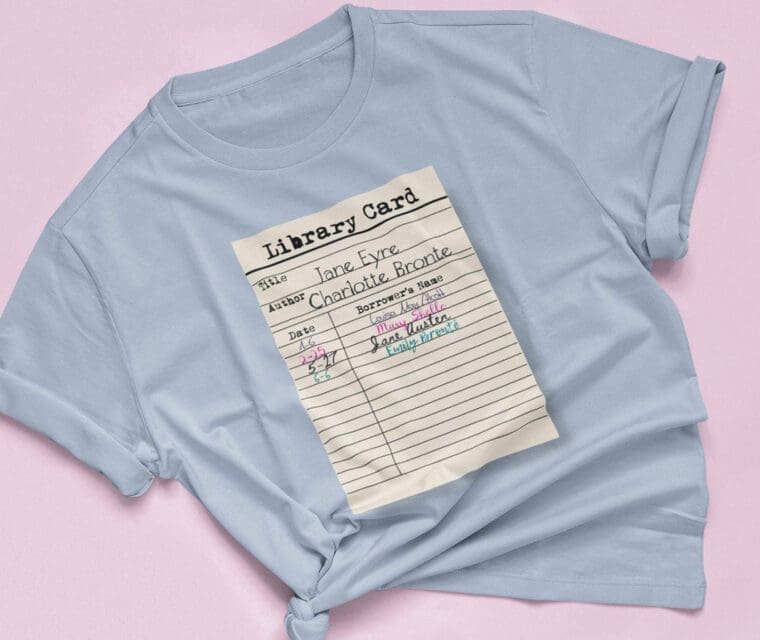What is the Duolingo App?
Duolingo is an app designed to help users learn a new language through “quick, bite-sized lessons.” With over thirty-five languages on the platform, the Duolingo App has pulled in millions of users worldwide. Claiming to be the “best way to learn a language,” Duolingo makes language-learning into a game.
The Duolingo App is free, but offers a paid version that allows you to skip ads and continue practicing despite errors. I opted for the paid version of the app in July 2020 for $12.99 a month. I have been finding it far easier to use than the free version. Without the frustration of having to maintain certain points and dealing with ads, I’ve now practiced my Gaelic for over 1,000 days straight!
What this Article Covers:

Gaelic Gifts & Finds from Etsy
Does Duolingo Actually Work?: Honest Thoughts on the Duolingo App
The Pros of the Duolingo App
Duolingo offers personalized learning with immediate grading to help users grasp a new language quickly. Users are motivated to continue learning with virtual rewards (called XP, or experience points), levels, and mastery test scores. If you have notifications on for the app, Duolingo will prompt you to practice each day. Failure to do so results in losing your “streak” of days practiced. The app claims that 34 hours on the app equals one semester of a university-level language course.
The app is pretty user friendly, and there is a desktop version as well. There is a clear structure and it’s easy to follow. You can test out of easy lessons, which is really useful if you have some background in a language but just want to brush up.
The strength of the Duolingo App is really in its ease of use. The lessons are short, so you can quickly fit a few in while you’re commuting, waiting for an appointment, or in between tasks.

The Cons of the Duolingo App
There are a lot of fair criticisms that could be leveled against the Duolingo App, and there are some strong feelings both for and against the app online.
First and foremost, the app doesn’t teach you the logic or reasoning behind a language. The app is based primarily on multiple choice answers and memorization. It is frustrating that there are no explanations for grammar intricacies or lists of vocabulary words. Some argue that it’s too easy to guess the right answer, making for ineffective learning.
Some languages on the platform have more resources than others. The Spanish lessons, for example, are very robust, while “boutique languages” have less content to learn from.

How I Use the Duolingo App to Learn Scottish Gaelic

Late in 2019, Duolingo began to offer Scottish Gaelic lessons on their platform. I decided to try it out the other month, just for fun. The Duolingo Gaelic offering has been incredibly popular, no doubt thanks to the immensely popular Outlander franchise.
As someone who is interested in Scottish history (and an Outlander lover), I was curious about the Gaelic offering. The app was free, so I decided to give it a shot.
Initial Thoughts on Learning Gaelic with the Duolingo App
The app is pretty compelling. It is bright, colorful, and easy to navigate.
Duolingo does making language learning into a game, and I found it easy to spend far more than the “5 minutes a day” they quoted on the app. The near-constant praise for answering questions correctly, completing a certain amount of the course, and for “mastering” the mistakes I had previously made was pretty compelling.

My Critiques of the Duolingo App
My issues with this app mirror the cons described above. I was frustrated that there was not a vocal list at the end of lessons, or that there was no explanation for grammar intricacies.
I studied Spanish throughout elementary, middle, and high school, and even took an intensive college-level course in the language. When using the Duolingo App to learn super basic Scottish Gaelic, I found myself grasping for conjugation tables in my head. I was trying to match up the different genders, persons, and sentence structure with the Spanish learning structure my brain is used to.
I found myself copying and pasting answers for the fill-in style questions, frustrated that the app wouldn’t let me “complete” a lesson until I spelled something correctly. This was hardly effective learning.
Duolingo is a Great Starting Point
All that being said, Duolingo is a great starting point. If you’re suddenly moving to another country and need to learn a language fast, you probably need a different course besides Duolingo.
However, Duolingo is particularly useful if you’re just trying to exercise your brain and learn something fun. Perhaps I’ll move to the Scottish Highlands some day and speak only Gaelic, but I doubt it. Either way, it’s a great way to challenge myself, and I find it all fascinating simply because of my own personal interest in the language’s history.

Frustrated with the lack of vocabulary lists, I began one of my own. I started seeking out other resources online for explanations and more background. Turns out, there are some really comprehensive online Scottish Gaelic learning tools (and even some Scots language courses, as well).
Continuing My Study of Scottish Gaelic
So, thanks to Duolingo, I’ve found a new, cerebral hobby. Instead of scrolling on Instagram all night, I’ll do some Duolingo Gaelic practice and copy down the words for my vocabulary lists, or check out LearnGaelic for more in-depth guides if I’m feeling particularly thoughtful.
Try Duolingo For Yourself
Try the Scottish Gaelic course from Duolingo for free here.
Explore all 30+ courses available for English speakers here.
Thanks for reading! If you found this post useful and want to support my work with Cats & Coffee, I’d be incredibly grateful!
You can buy me a coffee here:
*This post was originally published on August 25, 2020. It was most recently updated on October 8, 2023.



